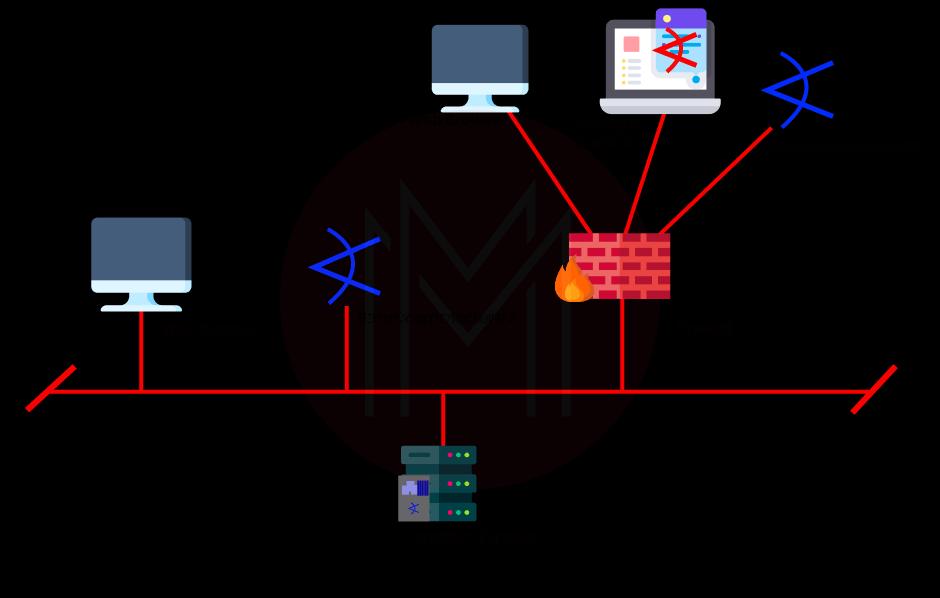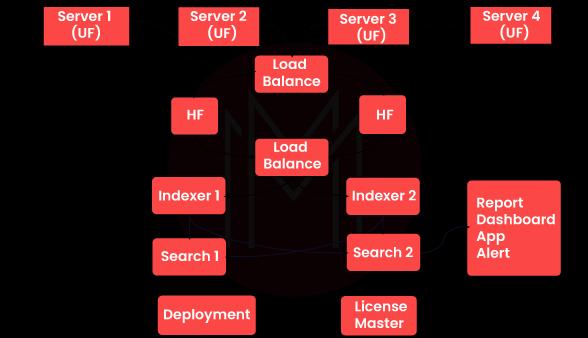ArcSight is a family of SIEM software solutions developed by HP Enterprise to assist businesses in protecting their data through security analytics. Splunk is well-known for its log management features. This article looks at some of the most important aspects of each approach, as well as its pros and cons.
The following are the topics covered in this ArcSight vs Splunk blog.
ArcSight vs Splunk - Table of Content
- What is ArcSight?
- ArcSight Features
- ArcSight Architecture
- What is ArcSight used for?
- Pros of ArcSight
- Cons of ArcSight
- What is Splunk?
- Splunk Features
- Splunk Architecture
- What is Splunk used for?
- Pros of Splunk
- Cons of Splunk
- Key Differences between ArcSight vs Splunk
What is ArcSight?
ArcSight is a vulnerability scanning application that uses machine learning to detect threats, coordinate investigations, build prioritized event lists, and more, all from a single platform. Employees may extract entities from log files and monitor events and behavior across a wide range of users, IP addresses, servers, and workstations.
Administrators can utilize ArcSight to spot issues like privileged account abuse, terminated employee behavior, data staging, email exfiltration, malicious tunneling, and mooching. Employees can look through entity alerts in chronological order using the timeline view, which helps them better assess risk. It also allows IT staff to evaluate the context of previously issued alerts, such as related entities and the model that caused the alarm.
ArcSight has an API that allows companies to combine the platform with a variety of third-party applications. Supervisors can use it to schedule reports, track entity behaviour, develop bespoke org charts, and manage regulatory compliance, among other things.
| If you want to enrich your career and become a professional in ArcSight, then enroll in "ArcSight Training". This course will help you to achieve excellence in this domain. |
ArcSight Features
Given below are some of the features of ArcSight:
-
Threat blocked:
It provides data access to the ArcSight threat framework and aids in the marketing of the latest security solutions, such as rules, reports, use cases, and dashboards.
-
Source ingestion:
The current and perhaps most essential aspect of the SIEM ArcSight tool is that it assists in the analysis of information from existing sources and furthermore combines cyber threat data intelligence via STIX and CIF standards dashboards. Sensible interfaces that enable signal formats, APIs, logs, flat files, firewall logs, Net flow, XML/JSON, and database connectivity make up source ingestion.
-
High-level Performance:
This feature includes 100,000 EPS (events per second).
- Value:
Users can convert from legacy license data models to the new or newest release using this functionality, and the ADP of any architecture can report on difficulties to help control conversion difficulty and costs. To accomplish this, Microfocus has made adjustments to its license arrangement, which now includes pricing alternatives that limit free data access.
- Implementation:
This is also a new function, and users have reported that it is simple to use. ArcSight, according to the Gartner research, is a highly configurable technology that supports threat management and compliance use cases. In many SOC contexts, the ArcSight API allows for broad data integration.
- Management:
This is ArcSight's most well-known and effective feature. This allows various custom rules, other contents, and SIEM dashboards to be exported and shared among customers, devices, and systems with the use of data modular packages. Centralized management, reporting of enterprise security events, and data analysis are also included in this function.
- Supporting:
Users will get good data management and security help here, but it will come at a price.
- Scalability:
This is a significant aspect as well; you can scale up to 100,000 EPS while using distributed correlation.
ArcSight Architecture
ArcSight architecture shows how nature functions and works. In this section, we'll give a quick summary of the architecture.
The architecture of ArcSight is depicted in the diagram below:

SIEM ArcSight is a high-availability security system that may be integrated with a variety of service architectures for best operational performance. Communications, caching, commit, recovery, and hardware are all included as default components. ESM, Logger, and CA will be accessed via the Arcsight interface or a web browser. The logger will get the upgraded ESM events, which will be preserved for a long time. The ESM instances will receive all smart connection events.
All smart connectors can be managed remotely using the ArcSight connector appliances or the ESM manager. The ESM will then transfer real-time events from the logger to the ESM, allowing for real-time correlation. Correlative events will be returned to the logger and stored for a long time. All smart connector events will be directed to different logs for load-balancing purposes. All smart connectors can be managed remotely using the Arcsight connector appliance.
What is ArcSight used for?
Customers can use ArcSight to identify and prioritise security threats, organise and manage incident response operations, and streamline audit and compliance processes. In 2010, ArcSight became a Hewlett-Packard subsidiary.
Pros of ArcSight
Below given are some of the Pros of ArcSight:
- ArcSight is a robust programme that can process millions of EPS files.
- To effectively correct true and false positives, simple integration with all end-point security management products (IPS/IDS, Firewall, Anti-Virus) and their aggregated output in a single spot.
- ArcSight allows you to create clusters.
- Integration with IT infrastructures such as ticketing systems, web applications, and threat feeds.
- The allure of real-time correlation is undeniable.
- Dashboards and visualisations are used to great effect.
[ Check out ArcSight Interview Questions and Answers ]
Cons of ArcSight
Below given are some of the Cons of ArcSight:
- To better manage, there is a storage issue that must be addressed.
- The search function should be better.
- ArcSight is a sophisticated tool that requires a lot of time and effort to set up and maintain.
- Troubleshooting ArcSight issues can be tough if you have a large environment.
- It takes a long time for the user terminal to load because it is fairly huge.
- Although the connection is good, it is not yet full because Arcsight is unable to connect directly with a number of new popular apps.
- It would have been better if the user interface had been improved.
What is Splunk?
Splunk is a piece of software that analyses and interprets machines and other types of large data. This machine data is created by a web server operating on a CPU, IoT devices, mobile app logs, and other sources. This information is not required for end-users and has no commercial value. Understanding, monitoring, and optimising the functioning of the equipment, on the other hand, is critical
Splunk can read data that is unstructured, semi-structured, or only occasionally structured. It lets you search, categorise, and build reports and dashboards on the data once you've read it. Splunk can now take big data from a variety of sources, including machine data, and run analytics on it, thanks to the emergence of big data.
| If you want to enrich your career and become a professional in Splunk, then enroll in "Splunk Training". This course will help you to achieve excellence in this domain. |
Splunk Features
Below given are some of the features of Splunk:
- Data Ingestion: Splunk supports a wide range of data types, including JSON, XML, and unstructured machine data such as web and application logs. As needed, the user can model the unstructured data into a data structure.
- Data Indexing: Splunk indexes the ingested data for faster searching and querying under various scenarios.
- Data Searching: In Splunk, searching entails using the indexed data to create metrics, forecast future trends, and detect patterns in the data.
- Using Alerts: When certain criteria are detected in the data being analysed, Splunk alerts can be used to send emails or RSS feeds.
- Dashboards: Splunk Dashboards can display search results as charts, reports, and pivot tables, among other things.
- Data Model: Based on specialised domain knowledge, the indexed data can be represented in one or more data sets. This makes it easy for end-users to navigate and understand business cases without having to master the complexities of Splunk's search processing language.
Splunk Architecture
Now let's see about Splunk architecture

- Universal Forward (UF): The Universal Forwarder, or UF, is a small component that transmits data to the larger Splunk forwarder. Universal Forward can be implemented on the customer or the provider. This component's sole purpose is to transmit log data.
- Load Balancer (LB): The default Splunk load balancer is used. It does, however, allow you to use your own load balancer.
- Heavy forward (HF): A heavy component is a heavy forward. This Splunk component enables data filtering. Collecting only error logs, for example.
- Indexer (LB): The indexer aids in the storage and indexing of data. It boosts the speed of Splunk's search. Splunk provides the indexing for you by default. For instance, the host, the source, and the date and time.
- Search head (SH): The search head is used to gather information and report on it.
- Deployment Server(DS): The deployment server aids in the deployment of the configuration. Update the UF configuration file, for example. We can utilise a deployment server to communicate data across the components.
- License Manager (LM): The license is dependent on usage and volume, such as 50 GB per day. Splunk checks the licensing details on a regular basis.
What is Splunk Used For?
Splunk is a tool for tracking and searching large amounts of data. It indexes and correlates data in a searchable container and allows for the generation of alerts, reports, and visualisations.
[ Learn Splunk Interview Questions and Answers ]
Pros of Splunk
- It's simple to use.
- It can be utilised by anyone in the company (i.e. IT, managers, CEO, etc.)
- It includes numerous plugins and customizations.
- It offers a beautiful dashboard, as well as search and charting options.
- It does not require any external databases.
- It can handle any quantity of data in any format.
- Indexing of your IT data in real-time.
- It finds relevant information in data automatically, making your work even more simple.
- It improves the intelligence of your system by saving searches and tagging useful information.
- It provides alerts to automate system monitoring.
- It creates reports that include graphs, interactive charts, and tables.
- It allows you to share these reports with the people you want.
Cons of Splunk
- Large data quantities result in slightly higher pricing.
- Search engine optimization is more of an art than a science.
- In comparison to tableau, the dashboard seems a little harsh.
- It is constantly looking for open-source alternatives to replace it.
[ Check out Splunk Career Opportunities ]
Key Differences Between ArcSight vs Splunk
| Parameter | ArcSight | Splunk |
|
Definition |
ArcSight can be implemented on-premises as an appliance or as software, or in the cloud, and supports both centralized and distributed installations. |
Splunk ES can be installed locally, as a SaaS solution via Splunk Cloud, in a public or private cloud, or as a hybrid configuration. |
|
Use Cases |
Enterprises |
Highly-regulated Industries |
|
Metrics |
350+ data sources, 75,000 events per second(EPS) |
Most users ingest several petabytes daily |
|
Intelligence |
Integrates with machine learning, intelligence platforms |
Integrates with Splunk UBA & machine learning toolkit |
|
Delivery |
Appliance, software, or cloud |
Software or cloud |
|
Pricing |
Based on data ingested and events per second(EPS) |
Based on max daily data volumes; starts at $1,800/GB/day |
Conclusion
We are at the end of the blog. We've effectively analysed the comparisons between ArcSight and Splunk, and we hope that this Arcsight Vs Splunk blog has helped you grasp both better. Both have advantages and disadvantages, and their use is determined by the demands of the organisation.
 On-Job Support Service
On-Job Support Service
Online Work Support for your on-job roles.

Our work-support plans provide precise options as per your project tasks. Whether you are a newbie or an experienced professional seeking assistance in completing project tasks, we are here with the following plans to meet your custom needs:
- Pay Per Hour
- Pay Per Week
- Monthly
| Name | Dates | |
|---|---|---|
| ArcSight Training | Jan 03 to Jan 18 | View Details |
| ArcSight Training | Jan 06 to Jan 21 | View Details |
| ArcSight Training | Jan 10 to Jan 25 | View Details |
| ArcSight Training | Jan 13 to Jan 28 | View Details |

Madhuri is a Senior Content Creator at MindMajix. She has written about a range of different topics on various technologies, which include, Splunk, Tensorflow, Selenium, and CEH. She spends most of her time researching on technology, and startups. Connect with her via LinkedIn and Twitter .
















